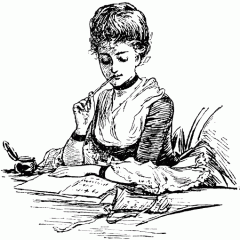In 1899, Broad Street Station was one of the busiest in London. An important hub for freight and passengers, millions of people passed through it each year.
Over at the North-Western Goods yard, workers loaded and unloaded cargo around the clock, heaving crates and containers amidst the hissing of steam, the rattling of trolleys and the piercing scream of whistles.
On the morning of Monday the 17th of April, a small team of workers were checking through a pile of boxes when they came to one addressed simply to the Hamburg Museum in Germany.
They noticed it was missing the necessary customs label, so decided to check there was no funny business going on. As they took a closer look, newspapers later reported, ‘an ancient and fish-like smell assailed the nostrils of the intelligent handlers of the goods.’
Curious about the aromatic contents of this suspicious box, the men set about opening it up. As the lid gave way, they recoiled in horror. Packed carefully inside was a naked human body.
The police were summoned immediately, and the box was removed to Kingsland Road Police Station. Here, a full examination revealed that the body was that of a woman age around 24 years old. The only mark of violence that could be discerned was a small cut on her left-hand side.
In the box alongside her were a number of carefully packed human skulls. This was a curious business indeed. Officers immediately sprang into action, in an attempt to trace the sender of this most morbid parcel.
In the meantime, journalists caught wind of the story. Headlines in the next morning’s papers screamed ‘Nude body found in box!’ and ‘Railway mystery!’.
Some reports claimed that the unfortunate woman’s head had been removed from her ‘mummified’ or ‘blackened’ body, while others claimed that not only was her head intact, but that it boasted waves of golden hair and piercing blue eyes.
The most sensational account claimed that no less than six railway clerks, two detectives and an inspector had all fainted instantly at the sight of the body.
The majority of reports seemed to agree on one detail only – that the explanation must be sinister. ‘All indications point to murder’, one journalist suggested, while another went further: ‘of course, it was murder’, they said.
By the end of the week, once the police surgeon had examined the body, all became clear… and the explanation was perhaps stranger than murder.
The woman in the box was a very long way from home indeed. She was not a murder victim, but a mummy from Peru.

The surgeon believed she had been dead for at least a decade, but she was almost certainly far older than this. Her body, which was bent double, had been well preserved by the hot sands of her home.
Still intact was her dark braided hair, and keeping her company were a number of skulls from the same region. Perhaps they had known each other in life? I’m sure they never dreamed that they would one day travel from the Andes to the bustling metropolis of Victorian London.
The historian Christopher Heaney describes Peru as ‘the Earth’s largest natural laboratory for making mummies.’ In fact, over 7,000 years ago, the Chinchorro people of this region became the world’s first practitioners of mummification – thousands of years before the Egyptians.
Though their techniques changed over time, they always removed skin and organs from the corpse before reinforcing the bones with sticks. The skin was then stuffed with vegetable matter, before the corpse was reassembled.
By the nineteenth century, historians and anthropologists had become fascinated by the burial rituals of ancient south American cultures, and their mummies were sought after by museums around the world – where many of them are still on display.
Today many people are rightly uncomfortable with the ethics of displaying human remains in museums, particularly when we consider the context of colonial exploitation in which they were forcibly removed from their places of rest.
These were not concerns shared by those who packed their mummy into a crate and loaded her onto a train.
It’s not clear where the Bond Street mummy ended up. While most reports suggested she was bound for the Hamburg Museum, others claimed she was headed to Belgium. Indeed, there are still Peruvian mummies on display in both locations.

Strangely, those in Belgium have recently made headlines yet again. This is because two institutions in the country have been at war, each claiming their own Peruvian mummy inspired the one that appears in Tintin comic The Seven Crystal Balls.
Who knows? Perhaps Tintin’s Mummy was the very same one that caused a stir at Broad Street Station all those years ago.






















